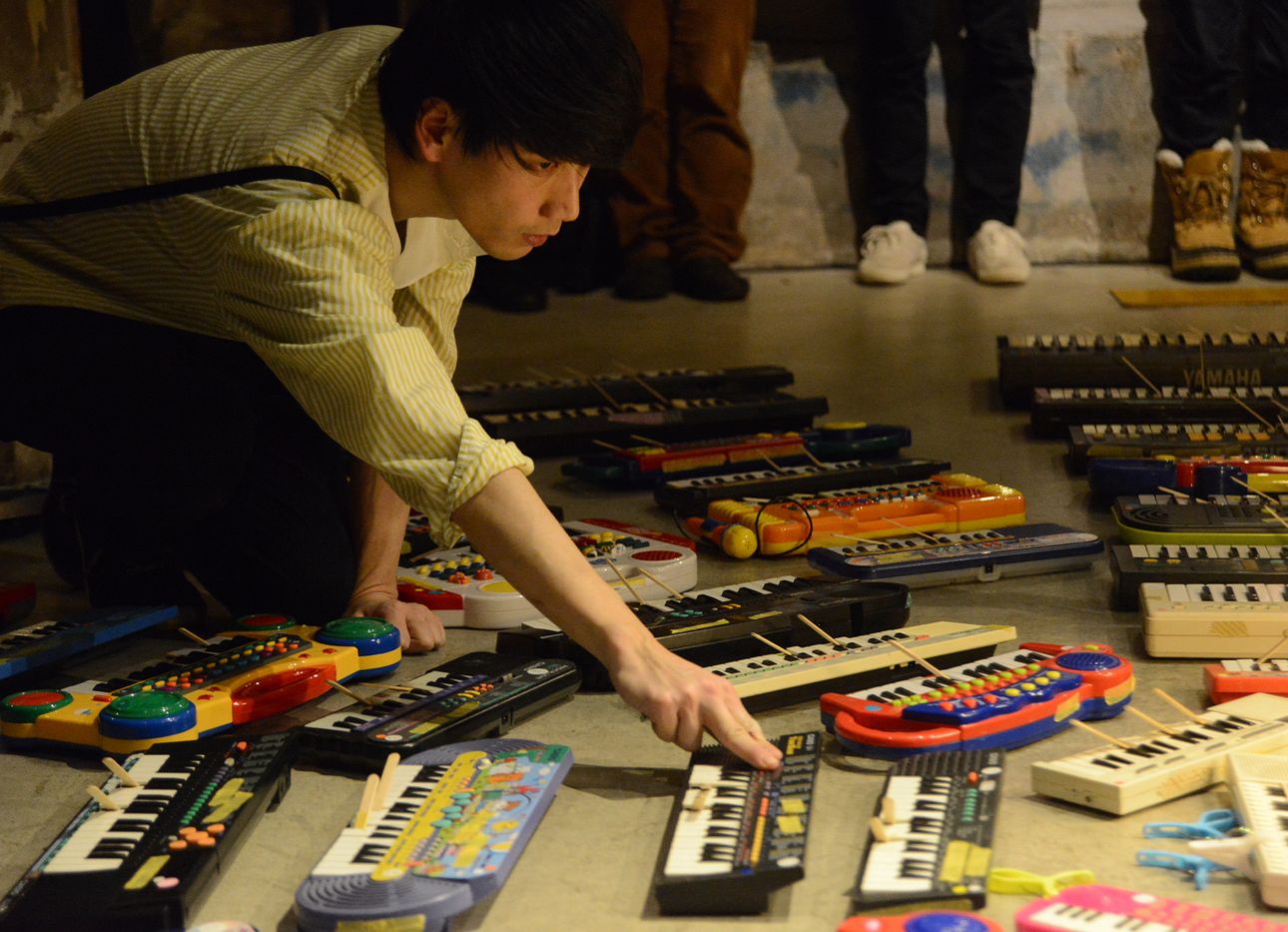
A Resonant Sound Performance, Created Using Children’s Toy Instruments
The arrival of autumn prompts many of us to layer up, and Japanese experimental musician Asuna follows suit—though with sound instead of clothing. Next week, he’ll make the U.S. debut of 100 Keyboards (September 30–October 2), an immersive audio presentation generated by overlapping tones, at the Brooklyn Academy of Music.
In the site-specific performance, which he first devised nearly two decades ago, Asuna moves between the toy instruments, arranged in concentric circles on the floor, and uses popsicle sticks to hold down the same, single key on each one. The notes—which vary slightly due to shifts in pitch as the second-rate devices’ batteries gradually wear out—build into a hypnotic drone known as a moiré pattern, in which layers of similarly pitched timbres combine and collide to create a meditative, sublime hum. We recently spoke with Asuna about the sonic experience, and how it might help reframe our thinking during these uncertain times.
How did the idea for 100 Keyboards come about?
As a teenager, I played in a lo-fi experimental punk band, [and] I listened to a lot of homemade recordings by musicians in that genre, including Puzzle Punks, Super Ball, Caroliner Rainbow, Id Battery, Richard Youngs, Azusa Plane, Sentridoh, Dump, and Daniel Johnston. Many of them used toy keyboards, so I began to collect them spontaneously. Because I had no money, I could buy only cheap things.
I found a Casiotone keyboard at a secondhand shop in the suburbs of Tokyo, where I was living at the time. I’d also been using tape to hold down the keys of organs and other instruments to make sustained sounds in those days—I’ve since replaced the tape with popsicle sticks. When I tried to make the same noise with the keyboard, I heard a strange swaying sound when two keyboards were simultaneously played at the same pitch. I realized that this was because the cheap toy instruments were slightly out of tune. I also discovered that the pitches changed subtly as their batteries drained.
I was also making music with a PC at school around the end of the nineties. Those software techniques made it possible to treat sound and frequency visually, as if looking at it through a microscope.
These extremely different interests gave me a distinct point of view on the conceptual and physical effects of sound. This led me to focus on interference sounds and moiré resonance. These various experiences are reflected in my performance.
How do you choose which note to play on the keyboards?
100 Keyboards is a site-specific work, and each space has its own frequency and reverberation. I test it in advance, and try to use a different note in each venue. However, the pitch and note are not important—it’s about the sound phenomenon that occurs.
Volume is another critical factor in my work. I consider the audio performance of the instruments, and situate them around the room accordingly. It doesn’t take much time to check the resonance, but it takes time to place the keyboards for interference.
Sound is often a particularly emotive experience. What do you hope listeners take away from your presentation?
I’d like them to listen to the subtle variations of sounds, which will vary based on their location in the space, by changing the direction of their ears or moving around the keyboards. Complex interference and resonance in the space can reveal different sound beats and loops between minute changes in one’s position. I hope this performance will not be perceived superficially as a “keyboard drone,” but rather, as a way to encourage self-reflection in the context of our perception of things.
Do you find parallels between the current state of society and the fluctuating noises produced by the keyboards?
Focusing on the instability of a toy means finding value in a point that is different from the original aim. That’s an attitude of trying to discover what is outside our cognitions, rather than taking a materialistic view of things. Music and art give us the opportunity to think about the subject by illuminating matters from a different perspective. Cultivating that may help measure the distance between this superficial world and ourselves.